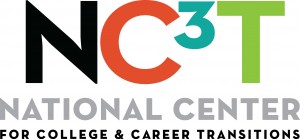How do we lead an effective Change effort? John Kotter, author of the renowned book called “Leading Change†explained eight steps for leading change. The first step is to create a sense of urgency. Without an understanding of the true challenges facing an organization, a business, or a community, it is difficult to garner the energy for sustained work around change.
Also of note is his third step: To “create a vision for change and key strategies.†One aspect of creating this vision is not only to articulate a positive future, but to convince people that change is possible and beneficial.
As leaders in Career Technical Education (CTE) and the broader Pathways Movement, these two ideas – Change is Necessary, and Change is Possible – go hand-in-hand.
In my new book, The Power and Promise of Pathways, I devote two chapters to organizing and communicating the most credible research and data available around these topics. The second chapter focuses on findings related to big economic and workforce trends of which everyone should be aware. I call these the Visible Challenges. They are:
1. The Skills Gap: There are Too Few Skilled Workers 
2. There is an Entrepreneurship Gap
3. Too Many Are Opting Out of the Workforce
4. Too Many Youth Are Not Working and Not Going to School
5. Too Few Youth and Young Adults Are Completing Postsecondary Education
6. The U.S. Workforce is Slipping in Competitiveness
7. Too Many Young Adults are Facing Economic Set-Backs
Next, I identified a number of Root Causes that find their home in our education and workforce systems. These Root Causes start to point the way to a Pathways System initiative as the solution. They are:
1. Many Youth Don’t Experience Impactful Career Development
2. U.S. Culture is Dominated by “University-for-All†Message
3. Most Schools Don’t Embrace Employer Perspectives on Career Readiness
4. Too Many Youth Are Disengaged From Learning
5. Too Many Youth Have Weak Academic Skills and Lack College Readiness
6. Too Many Students Still Drop Out of High School
7. Very Few High School Graduates Have Well-Developed Career and Technical Knowledge
8. Our Student Population is Becoming More Diverse But Large Achievement Gaps Persist
In the next chapter, I organized research findings that suggest the effectiveness of Pathways System initiatives, as well as discreet education reform strategies that can be incorporated into a Pathways system. The positive evidence includes:
1. Pathways Initiatives Help Improve Academic Achievement
2. Pathways Initiatives Help Increase Rigorous Academic Course Taking
3. Pathways Initiatives Help Improve High School Graduation
4. Pathways Initiatives Help Develop Career Readiness Skills
5. Pathways Initiatives Help Increase Long-term Earnings
Specifically, Pathways-related reforms point to the following benefits:
1. Career Exploration
- Career Exploration Helps Students Make Better College Choices
- Career Exploration Leads to Better Postsecondary Achievement
- Career Exploration Helps Students Make More Intentional Choices
- Career Courses Help Improve Academic Achievement
2. Career and Technical Education
- CTE Strengthens Student Achievement
- CTE Credentials Boost Earnings
- CTE Course-taking Reduces High School Dropouts
- Career Technical Student Organizations Enhance Student Engagement
- CTE Students Develop Workplace-relevant Competencies
- Arkansas CTE Provides Achievement and Graduation Outcomes
- Massachusetts CTE Elevates Achievement
3. Employer and Community Engagement
- Employer Engagement Enhances the Student Learning Experience
- Employer Engagement Improves Student Motivation for School Achievement
- Employer Engagement Helps Students Makes Better Career Decisions
- Community Volunteerism Strengthens Student Motivation and Achievement
4. Structured Student Supports
- High School Support Strategies Help Prevent and Reduce Student Dropouts
- High School Supports (AVID) Strengthen College Retention and Persistence
- College Support (ASAP) Improves College Retention and Completion
- Supports and Guidance Help Improve College Completion
5. Structured Programming
- Structure Programs Improve College Enrollments and Completion (Early-College Initiative)
- Guided Pathways in Community Colleges Strengthen Student Retention and Completion
6. Dynamic Teaching and Learning
- Active Learning Strategies Help Improve Student Learning
- Integrated Math-in-CTE Improves Student Achievement
- Integrated Literacy-in-CTE Improve Student Achievement
- Integration of Academic and CTE Content Promotes Postsecondary Success
- Accelerated Developmental Education Increases Postsecondary Success
Of course, in this blog, we don’t have the space to explore the specifics behind each of these findings. But for those promoting Career Technical Education and Pathways Systems, rest assured that the data is compelling, and every day and every year, the body of knowledge is growing.
At the upcoming Advance CTE meeting, we are excited to offer a complimentary copy of The Power and Promise of Pathways to each meeting participant. I hope the way this information is organized will help you and your fellow leaders have more confidence in making the case for CTE and Pathways. Change is Necessary; Change is Possible!
This post was written by NC3T, a sponsor of the 2016 Advance CTE Fall Meeting. Thank you NC3T!

